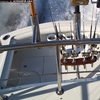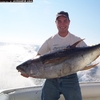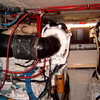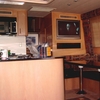-
Content count
8,418 -
Joined
-
Last visited
-
Days Won
42
Content Type
Profiles
Forums
Calendar
Gallery
Downloads
Store
Everything posted by Fubar512
-

Treating airline passengers to high-G maneuvers
Fubar512 posted a topic in Military and General Aviation
I wonder if the airlines would charge an extra fee if pilots were to perform takeoffs and breaks like this -

Mission editor North Atlantic not working
Fubar512 replied to santroM's topic in Thirdwire: Strike Fighters 2 Series - General Discussion
The game needs to be patched to at least the July 2012 level to correct some issues with the mission creator in SF2NA. And, in order to prevent the ships in your carrier groups from turning into real "ATVs", the other terrains require a "TerrainX_Water.bmp" file to define and limit the areas that carrier groups can operate in. -
Depending on the title and which moniter I output to, either 1680x1050 or 1920x1080 (1080p)
-
Well, it appears as though I lucked out and received a good chip. 4.0 gHz at 1.065 vcore. Here are temps in SF2NA, with everything maxed out. According to Realtemp, the hottest the processor got was while it was loading a mission. 53 C max, with ambient temp at 22 C, with case temps hovering around 27 C. As for the improvement in frame rates; My maximum FPS is now 3X what it was with my old system (it hit 200 fps a few times!). The minimum FPS hardly ever goes below 30, though it did dip into the high teens, while on an external view of Marcfighters Su-3,3 as it was sitting on the Ulyanovsk's flight deck. Even then, the amazing thing is how smooth it was. Over the stock SF2NA Iceland, the game is now smooth and playable, whereas it really wasn't before, as it stuttered badly. Mind, you, I am coming from an E8400 Core2Duo, mildly overclocked and teamed with a GTX 250 (which was in actuality a reconstituted GTX 9800). That combo was reasonably fast.....6 years ago Compared to that system, this one seems to be appreciably faster, even while performing mundane tasks.
-
Well, I'm up and running. Just finishing up a few tweaks, and then I'll try a few missions in SF2NA to see how it performs.
-
Well, the system is up and running. In a few moments, I'm going to backup some crucial files on my HDD, and then run sysprep on it. This strips the OS of its current hardware profile, and prepares it for deployment in a new system, without losing any of your email and network settings, and retains all installed programs (though some may have be to re-registered). Once the OS sees the new hardware, it will simply ask for the corresponding drivers, as if it were a fresh install.
-
With about 5-8 mm to spare. It's actually pretty light for its size, at 650 grams with two fans. The Noctua NH-D15, for example, weighs more than 1 kg/2.2 lbs! The following video is what sold me on the Cooler Master (which can be had for less than 1/3 the cost of the Noctua)
-
As I'm on a budget, for now, I've decided on the Pentium-G 3258 "20th Anniversary" CPU for now, with an eye towards upgrading to either an i-7 4790K, or possibly a Broadwell Processor (which Intel states will be usable on 9-series boards) in 6 months or so. The G 3258 set me back just over $70, and these CPUs are supposedly great little overclockers. In fact, some have gotten as high as 4.8 gHz out of them, and even 4.0 gHz at default voltage. I've paired it with an MSI GTX750i OC graphics card, and 8 GB of HyperX 1600 mHz RAM.
-
Thanks Geary. Test fitting the heat sink (a Cooler Master Hyper 212 EVO), and checking for RAM slot interference. As you can see, I purchased an additional fan so I can evaluate this unit in push-pull mode. The low profile Kingston HyperX RAM modules just manage to squeeze underneath the pusher fan.
-
For most of my day to day computing and gaming, just an old LG Flatron 22" LCD@1680x1050. I intend to use the HDMI port to connect to my TV at 1080P. as well.
-

Panther against Meteor, which mark?
Fubar512 replied to Stratos's topic in Thirdwire: Strike Fighters 2 Series - General Discussion
If you take the time to perform a bit of research, you'll find stuff like this to help with a comparison: The Royal Australian Air Force (RAAF) acquired 113 Meteors between 1946 and 1952, 94 of which were the F.8 variant.[93] The first RAAF Meteor was a F.3 delivered for evaluation in June 1946.[94] Australia's F.8s saw extensive service during the Korean War with No. 77 Squadron RAAF, part of British Commonwealth Forces Korea, and had personnel from other Commonwealth air forces attached to it. The squadron had arrived in Korea equipped with piston engine aircraft, the F-51D Mustangs. In order to match the threat posed by Communist MiG-15 jet fighters, it was decided to reequip the squadron with Meteors.[94] Jet conversion training was conducted at Iwakuni, Japan, after which the squadron returned to the Korean theatre in April 1951 with about 30 Meteor F.8s and T.7s. The squadron moved to Kimpo Air Base in June, and was declared combat ready the following month.[95] Other aircraft, such as the F-86 Sabre and the Hawker Hunter, were considered but were determined to be unavailable; the Meteor proved to be considerably inferior in combat against the MiG-15 in several respects, including speed and maneuverability at high altitude.[96] On 29 July 1951, 77 Squadron began operating their Meteors on combat missions. The squadron had mainly been trained in the ground attack role, and had difficulties when assigned to bomber escort duty at sub optimum altitudes. On 29 August 1951, eight Meteors were on escort duty in "MiG Alley" when they were engaged by six MiG-15s; one Meteor was lost and two damaged, and 77 Squadron did not officially destroy any enemy aircraft on this occasion.[97][N 2] On 27 October, the squadron achieved its first probable followed by two probables six days later.[98] On 1 December, during the air battle of Sunchon between 12 Meteors and some 40 MiG-15s, the squadron had its first two confirmed victories:Flying Officer Bruce Gogerly made the first kill. However, in the course of the same dogfight, four Meteors were also destroyed.[99] RAAF Meteor F.8 A-77-570 undergoing maintenance at Kimpo air base (K-14) during the Korean War. At the end of 1951, 77 Squadron and its Meteors were assigned to ground attack duties due to their favourable low-level performance and sturdy construction.[99] In February 1952, over a thousand sorties were flown in the ground attack role; these sorties continued until May 1952, when 77 Squadron switched to fighter sweep operations. The last encounter between the Meteor and the MiG-15 was in March 1953, during which a Meteor piloted by Sergeant John Hale recorded a victory.[100] By the end of the conflict, the squadron had flown 4,836 missions, destroying six MiG-15s, over 3,500 structures and some 1,500 vehicles. About 30 Meteors were lost to enemy action in Korea—the vast majority had been shot down by anti-aircraft fire while serving in a ground attack capacity.[93] A VF-111 F9F-2 dropping bombs in Korea, 1951/52 The Grumman Panther was the primary U.S. Navy and USMC jet fighter and ground-attack aircraft in theKorean War. The Panther was the most widely used U.S. Navy jet fighter of the Korean War, flying 78,000 sorties and scoring the first air-to-air kill by the U.S. Navy in the war, the downing of a North KoreanYakovlev Yak-9 fighter.[citation needed] F9F-2s, F9F-3s and F9F-5s, as rugged attack aircraft, were able to sustain operations, even in the face of intense anti-aircraft fire. The pilots also appreciated the air conditioned cockpit, which was a welcome change from the humid environment of piston-powered aircraft.[6] Despite their relative slow speed, Panthers also managed to shoot down two Yak-9s and seven Mikoyan-Gurevich MiG-15s for the loss of two F9Fs. On 3 July 1950, Lieutenant, junior grade Leonard H. Plog of U.S. Navy's VF-51 flying an F9F-3 scored the first U.S. Navy air victory of the war by shooting down a Yak-9.[7] The first MiG-15 was downed on 9 November 1950 by Lieutenant Commander William (Bill) Amen of VF-111 "Sundowners" Squadronflying an F9F-2B. Two more MiG-15s were downed on 18 November 1950. The final four MiG-15s were downed on 18 November 1952 by Lt. Royce Williams of VF-781, flying off the carrier Oriskany during a series of air strikes against the North Korean port of Hoeryong, right across the mouth of the Yalu River from the major Soviet base at Vladivostok. Williams' victories were notable because all four were flown by Soviet Naval Aviation pilots. In 1992, Russian authorities admitted that Captains Belyakov and Vandalov, and Lieutenants Pakhomkin and Tarshinov were lost on 18 November 1952. Information regarding this fight had been suppressed by the U.S. Navy at the time because personnel of the then-new National Security Agency had been involved in the intercept, and U.S. authorities were concerned that the Soviets might learn of this if the affair was publicized. No other fighter pilot ever scored four MiG-15s in a single combat.[8] Future astronaut Neil Armstrong flew the F9F extensively during the war, even ejecting from one of the aircraft when it was brought down by a wire strung across a valley. Future astronaut John Glenn and Boston Red Sox all star baseball player, Ted Williams also flew the F9F as Marine Corps pilots. -

FM Help
Fubar512 replied to ShrikeHawk's topic in Thirdwire: Strike Fighters 2 Series - Mods & Skinning Discussion
I'd suggest experimenting with something along the the line of this: ControlMachTableNumData=7 ControlMachTableDeltaX=0.10 ControlMachTableStartX=0.10 ControlMachTableData=1.000,0.976,0.895,0.855,0.0.610,0.505,0.306 -
I was reminiscing about that "bad old days" of PC cooling and overclocking with a friend, who reminded me that I had once used a heat-sink topped off with an 80 mm 7200 RPM Delta "screamer" fan,to cool an OC'd Athlon XP CPU. I used to argue the point that the noise it made was worth the added cooling protection! I am surprised that I did not lose my hearing. To give those of you who are unfamiliar with those old Deltas sounded like, here's a video: If anything, It reminds me of the sound effects from "Earth versus the flying saucers:
-
LOL...well, I can do one better. Check out this page, specifically the price and warning provided: http://www.sidewindercomputers.com/de80tfexhisp.html "Important note: Please use caution when handling this part, always take care to mount any Delta parts before use as it can cause bodily harm at 8000 RPM."
-

Increasing catapult power
Fubar512 replied to ignacioc91's topic in Thirdwire: Strike Fighters 2 Series - Mods & Skinning Discussion
Ignacio, The catapult end points can be adjusted to simulate VTOL quite easily, as evidenced by this video that I created a couple of years ago: -
From the album Fubar512
Krizis's Yak-38 model in VTOL mode, under AI control -

bump maps DH Venom
Fubar512 replied to slick cowboy's topic in Thirdwire: Strike Fighters 2 Series - Mods & Skinning Discussion
Was the model originally equipped with, and/or setup to use bump maps? If not, then the answer is no. The model has to have bump-mapping associated with it from the onset in 3dMax, before its exported to LOD format. One cannot simply add bump maps like they were skin textures. -

Experiencing Visual Anomalies with 3 aircraft In SF2.... Requesting help
Fubar512 replied to SkyStrike's topic in Thirdwire: Strike Fighters 2 Series - General Discussion
If that's the case, then the issue is due to the SF2NA default IcelandNA terrain being LOD-based, as opposed to earlier Thirdwire and third-party terrain sets, which are TOD-based. Nothing you can do about that, as it would then be a 3D model issue. -

WW2 Screenshots Thread
Fubar512 replied to Wrench's topic in Thirdwire: Strike Fighters 2 Series - Screen Shots
Meanwhile, high above an undisclosed test range...... -

huddata.ini questions
Fubar512 replied to ultramig688's topic in Thirdwire: Strike Fighters 2 Series - General Discussion
In the same catalog folder that a given aircraft's data.ini goes in. For example, most of the F-4 models have theirs located inside of the ObjectData008.cat file -

F-86H (HOG)
Fubar512 replied to Zurawski's topic in Thirdwire: Strike Fighters 2 Series - General Discussion
Interesting read: The first two F-86Hs were built in California. The first F-86H made its maiden flight on April 30, 1953, piloted by Joseph Lynch. It carried no armament, and was fitted with the standard Sabre slatted wing. By the time it was sent to Edwards AFB for tests in October, it had the "6-3" wing of the later F-86F. In December, it returned to Edwards with slatted wings. The vertical tail assembly was 3 inches taller and wider through the chord, but had a smaller rudder. The horizontal tail surfaces were changed from the "all-flying" design with a split stabilizer and elevator to a single all-flying tail design. Initially, the design was to have the old-style slatted wing without the "6-3" extension. The 15th F-86H-1-NH was fitted with the "6-3" wing of the later F-86F, with extended wing tips and wing fences. Wing span was increased from 37.12 feet to 39.1 feet and wing area rose to 313.4 square feet. The F-86H-5-NH, which appeared in January of 1955, introduced an armament of four 20-mm M-39 cannon. The M-39 was formerly known as the T-160, which was first tested in Korea. These guns weighed 286 pounds more than previous Sabre gun installations, but packed a lot more punch. Ammunition supply was limited to only 600 rounds, which was only about six seconds of firing time. The last of 60 F-86H-5-NH was delivered in February of 1955. In the meantime, on June 11, 1953 the USAF approved an additional contract (NA-203) for 300 F-86H-10-NHs. These differed from earlier F-86Hs primarily in having different electronic equipment and in having the J73-GE-3E engine. The first aircraft was delivered in January of 1955, and the last aircraft on the order was delivered in April of 1956. The last ten H-10s used the so-called "F-40" wing, with extended wingtips and slats on the extended leading edge, which improved low-speed handling. Eventually, all of the remaining Hs in the USAF and ANG inventories were retrofitted with the "F-40" wing. -
The recent abundance of harbor and grey seals along the NJ coast has led to an increase in White Shark sightings, as well as encounters with them while fishing. Here are two videos taken within the last two weeks, all in the area of the "28 Mile Wreck" (so-named due to it's distance from Absecon inlet, which is located at the north-end of Atlantic City) Here's a link regarding that wreck (which was known the SS Varanger in it's heyday) http://www.aquaexplorers.com/shipwreckvaranger.htm Two weekends ago: http://www.nj.com/ocean/index.ssf/2013/06/video_great_white_shark_circles_boat_off_atlantic_city_coast.html This past weekend: http://www.nj.com/news/index.ssf/2014/06/video_shows_great_white_shark_circling.html White sharks are protected in US waters, all you can do is tag them for research purposes, you are not allowed to purposely fish for them.
-
And here we go again: http://www.nbcnewyork.com/news/local/Shark-New-York-Beach-Tri-State-264829171.html I used to think that incidents like this only took place when they were about to release a new "Jaws" sequel.






